The name Garum is used in a generic way to define fish sauces obtained from fermentation in brine, where microorganisms and enzymes present in the fish.
Garum is often thought of as a sauce produced by putrefying fish, and therefore unacceptable to most modern consumers.
To fully understand the importance and the success of the fish preserves in ancient and modern diets and to dispel biases about their taste we must mention the complex biochemical and enzymatic processes which produce them.
According to Harold McGee, an American author who writes about chemistry and the history of food and culinary science, when we talk about Garum we can classify the process as a "benign decomposition".
What makes Garum delicious is precisely the chemical decomposition process, which develops its full flavor.
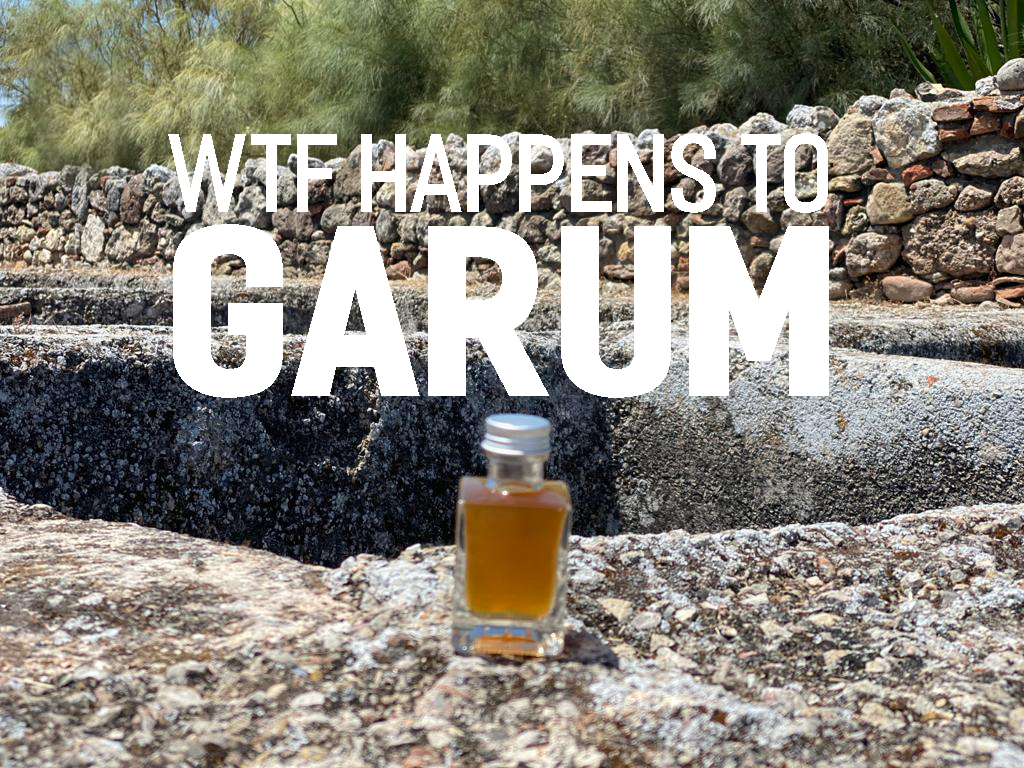
The very large molecules, such as proteins, carbohydrates, fats and oils, have no quality that we can register with our chemical senses.
Through taste and smell we can only register the presence of small molecules. It is these small molecules that we can “grab”, sending a message of recognition to our brain.
On the palate, we generally have five senses: salty, sour, sweet, bitter and, recently, umami, which gives us the feeling of tasty, savoury
There are thousands of scents in our natural world that we can pick up and identify, but these molecules need to be small enough to be able to fly and reach our nose.
So the key to making a Garum is to break down the large molecules of the fish, mainly made up of proteins and oil. Proteins consist of large molecules made up of blocks of smaller molecules that are amino acids. Some amino acids are small enough to be detected by sensors in our language. Some are sweet, others are bitter, salty or sour and some give the sensation of taste, or umami, as is the case with glutamic acid whose salts are known as glutamate.
Glutamate is an important neurotransmitter that functions as a flavor enhancer. Glutamate is thought to be involved in cognitive functions in the brain, such as learning and memory.
What is different about umami, when compared to the other flavors, is that while in salty, sour, sweet and bitter, there are a lot of molecules, in umami there are few, but all related to protein metabolism, especially glutamate, that are the most effective.
In the Garum production process, fish proteins are broken down into amino acids, mainly glutamic acid and glutamate, which gives us the umami sensation, so rare in the rest of our flavor captures.
The fact that garum was so popular in ancient times was probably due to the high concentration of monosodium glutamate, the sodium salt of glutamic acid, one of the most abundant non-essential amino acids that occurs in nature, which is found naturally in foods such as tomatoes, mushrooms or parmesan cheese.
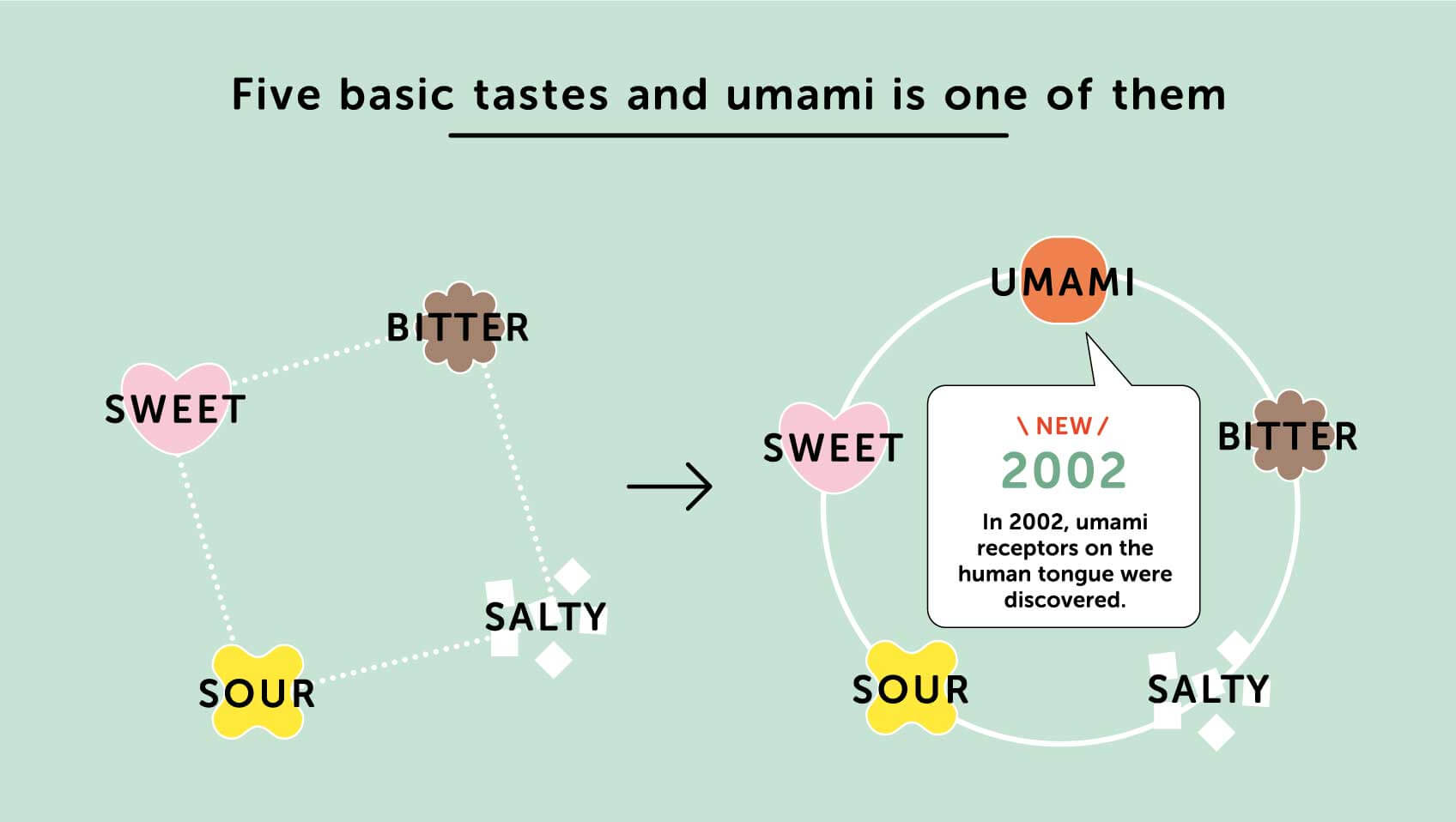
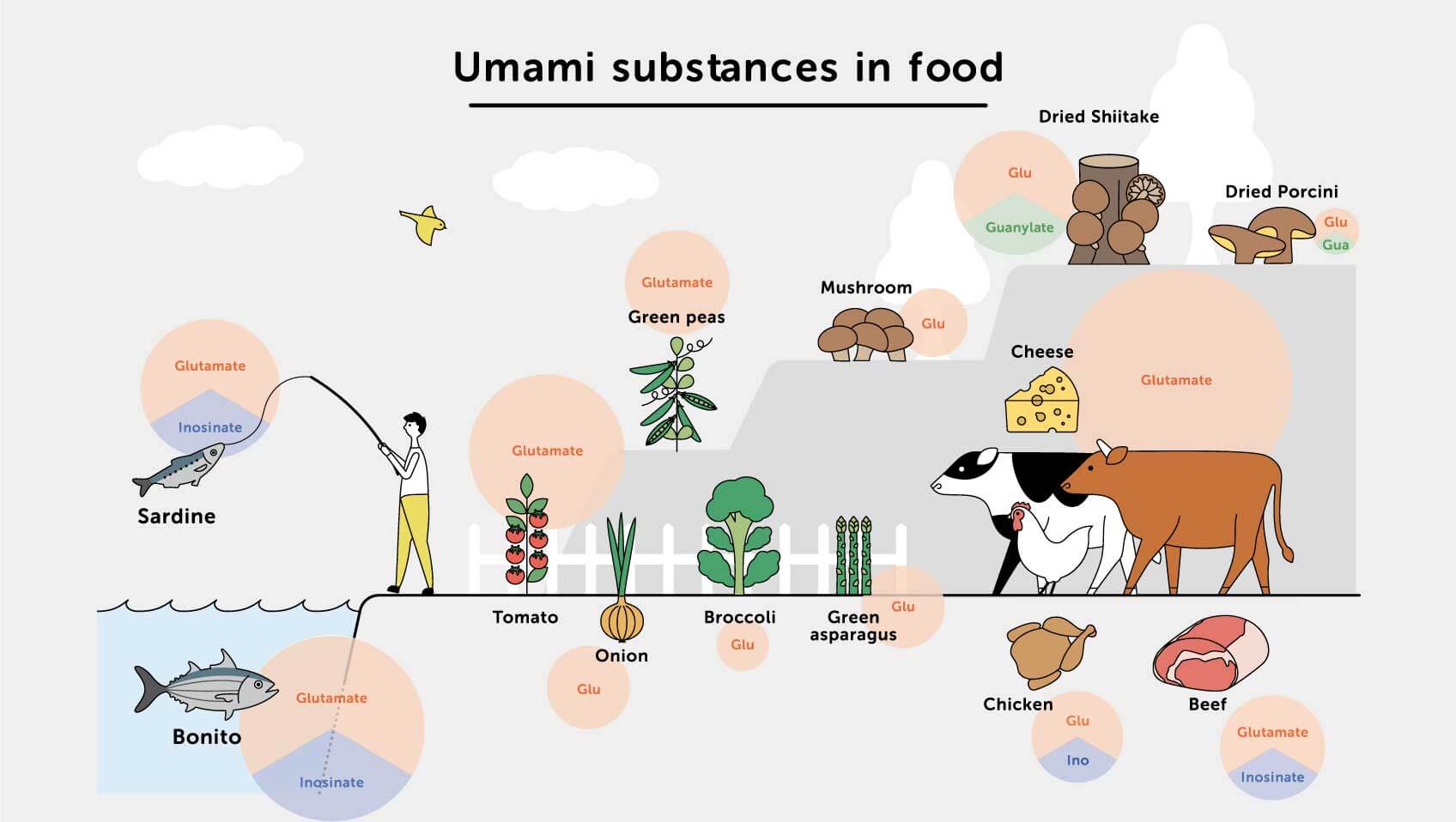
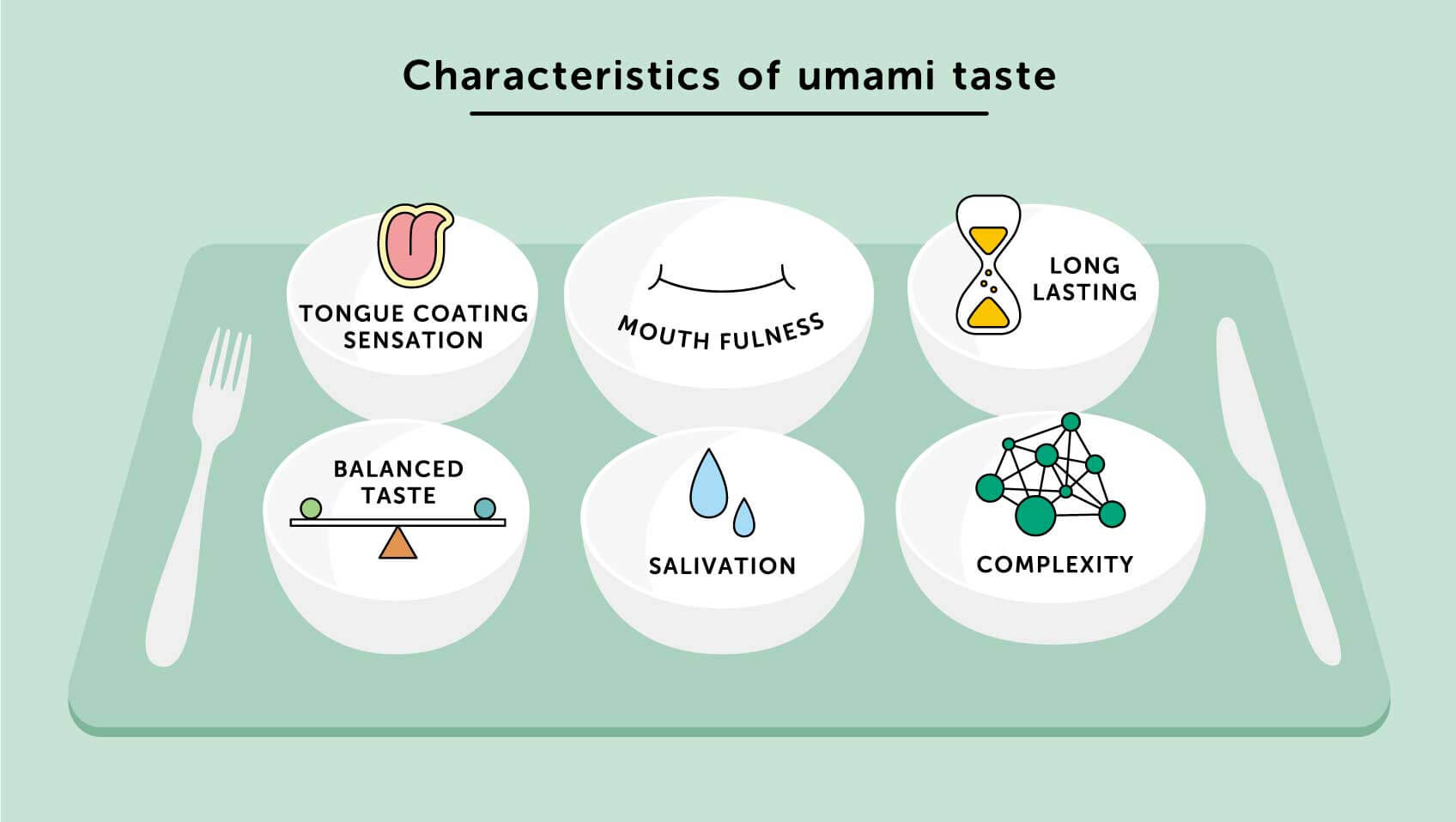
Imagens retiradas de www.ajinomoto.com
The protein breaking process occurs thanks to the action of enzymes. Enzymes are also proteins, but they specialize in breaking down other molecules, including proteins.
When a fish is caught and dies, and its systems stop functioning properly, the action of the enzymes is gradually reversed only for decomposition.
After death, fish, like all other animals, undergoes a series of decay processes whose first step is autolysis : the degeneration of cells and organs through chemical substances, processes triggered by intra enzymes. Intracellular enzymes, which exist within the cells that make up the tissue, slowly break down muscle tissue proteins into amino acids, including glutamate , and this is how the flavor develops.
The speed of the autolytic process increases with increasing ambient temperature, but can be stopped if the textures are quickly frozen or dehydrated.
As a result of the autolytic degeneration of the organs of the gastrointestinal tract, the bacterial flora of the intestinal tract spreads to the rest of the corpse, initiating a process called putrefaction , the second phase of decomposition.
Bacterial activity initially produces gases such as sulfur dioxide, carbon dioxide, ammonia, methane, etc. and continues with the destruction of muscle proteins and the production of toxic amines, such as cadaverine and putrescine.
The real salting, the one used to produce salted fish and meat, produces a dehydration of the tissues that blocks autolysis, but it needs a large amount of sodium chloride (NaCl), a process that we can compare to the production of ham. In this case, it is pork leg meat, which is salted so as not to spoil, that is, not to putrefy, and thus, over the months, enzymes break down muscle proteins.
Even in environments with less salinity, such as brine - although with a high salt content of 10-20% NaCl - the progress of autolytic processes is not prevented, but it is enough to prevent the beginning of putrefaction by stopping the development of dangerous microorganisms to health.
After some time, the result of the decomposition in brine leads to the formation of a perfectly edible liquid, often amber in color, salty and full of proteins, iodine and fluorine, histidine and vitamins A and D (lat. Garum, liquamen). You also get a very salty pasty substance (lat. Allec) with excellent nutritional value.
The other invisible part of the Garum process is the contribution of microbes, bacteria in particular. The human microbiome is the sum of all microorganisms that reside in human tissues and fluids and in each anatomical site, our mouth, skin, digestive system, has its specific microbiome.
Os peixes têm também milhões de bactérias principalmente nas vísceras, muito mais do que os humanos na pele, porque a sua superfície é húmida. Existem assim milhões de enzimas por grama de peixe, especialmente no sistema digestivo e portanto muitas coisas vivas no tecido dos peixes mortos, enzimas que quebram proteínas e gorduras, para obter energia, alimentarem-se e reproduzirem-se.
No processo desse metabolismo, os micróbios geram os seus próprios conjuntos característicos de moléculas voláteis que são determinantes para o aroma do Garum. As enzimas dos músculos e as enzimas das vísceras – se o sistema digestivo for incluído na preparação do Garum – contribuem muito para a sua qualidade e sabor. São pois os micróbios que geram grande parte do aroma.
Pelo facto de os micróbios estarem envolvidos neste processo, é crucial que na produção sejam seguidos certos cuidados por forma a evitar a presença de micróbios patogênicos e que podem provocar doenças, como o botulismo. O botulismo pode resultar do crescimento de bactérias do género Clostridium, sendo controlado pelo uso do sal, pois estes micróbios não suportam altos níveis de salinidade.
Garum production is a very complex system, so different types of fish sauces, made with different processes, different types of fish, different forms of production, can result in very different flavors.
The species of fish used. In this production of Garum in Tróia the use of sardines was chosen. In Tróia, mainly traces of sardines were found, which is why this species was chosen for this production, in addition to the symbolism it represents for Portugal.
Water where fish come from: water is home to fish bacteria. The sardine used was fished by the fishing fleet of the members of the fishing cooperative Sesibal, fished from the waters of Setúbal and Sesimbra.
The parts of the fish we use : if we use guts and blood, we are using digestive enzymes, which are more active than those in muscle. If we use blood and liver, we’re adding a lot of iron. Iron is a catalyst for chemical reactions that develops flavors faster and more intensely.
Salt also influences Garum: less salt is used in the Mediterranean than in Asian fish sauces. We used salt from the last active producer in Vale do Sado, Carlos Bicha Lda, from Alcácer do Sal.
Temperature of fermentation will determine which microbes are able to survive at these high levels of salt and how quickly they are able to work. When we put a Garum preparation in a tank, it will make it receive the warmth of the stone walls, which heat during the day and emanate heat at night.
The way the fermentation is processed, if stopped or agitated, if hermetic, exposed to air, exposed or not to sunlight, if it is rectified to water or if ingredients such as roasted grains, wine are added, koji, a world of many different possibilities. Our fermentation is stirred weekly and no ingredients are added except koji.
Fermentation period. In the present case we calculate that the fermentation until the completion of Garum will not be less than three or four months, and may take longer.
Aging time , which can be several months, will give these small molecules developed during fermentation a chance to react with each other and generate all sorts of new things.
Technical supervision of the text: researchers in the food field Marisa Santos, Catarina Prista and Anabela Raymundo from the Center for Research in Agronomy, Food, Environment and Landscape of the Instituto Superior de Agronomia
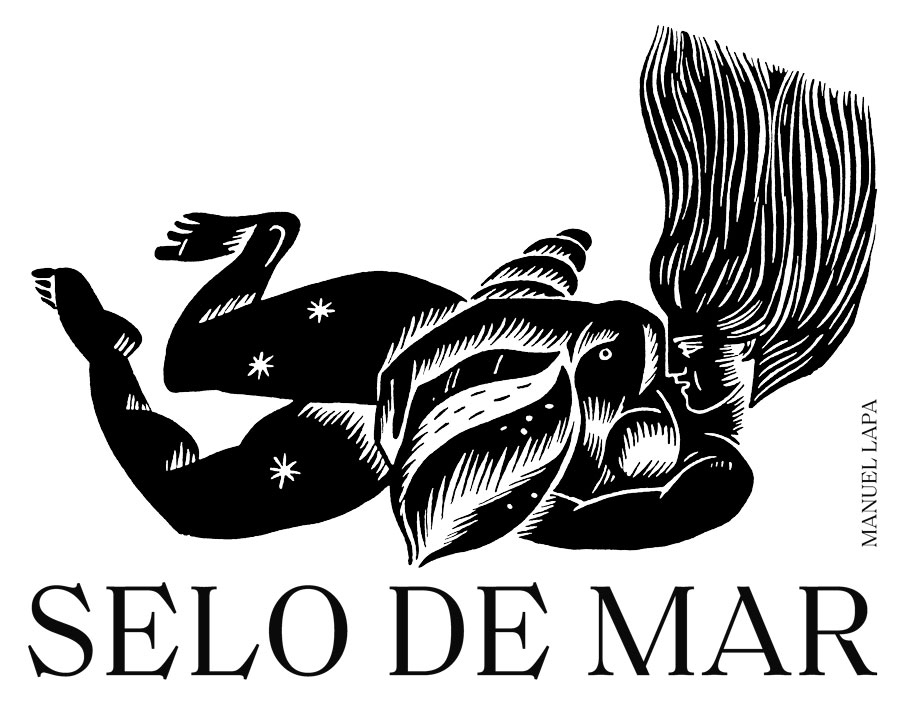
Customer Care
CAN THE CAN uses cookies in order to provide you with a better online experience. By continuing your visit to our site you agree to the use of cookies
Contact
reservations@canthecan.net
info@canthecan.net
T. +351 914 007 100
T. +351 218 851 392
Terreiro do Paço 82/83
1100-148 Lisboa – Portugal
Open everyday from 9:00 AM to 1:00 AM